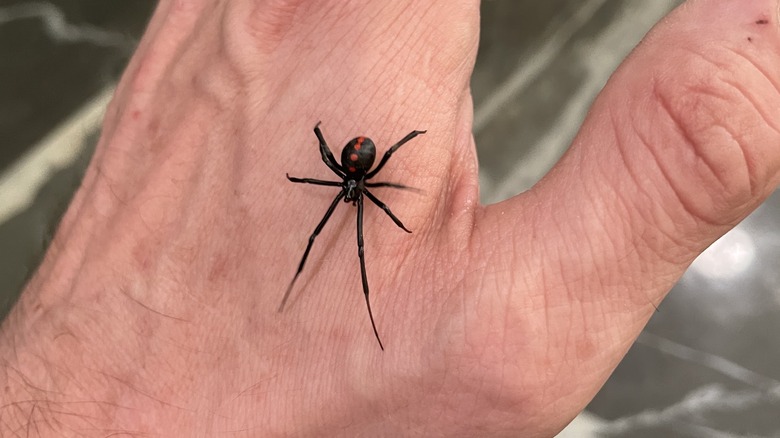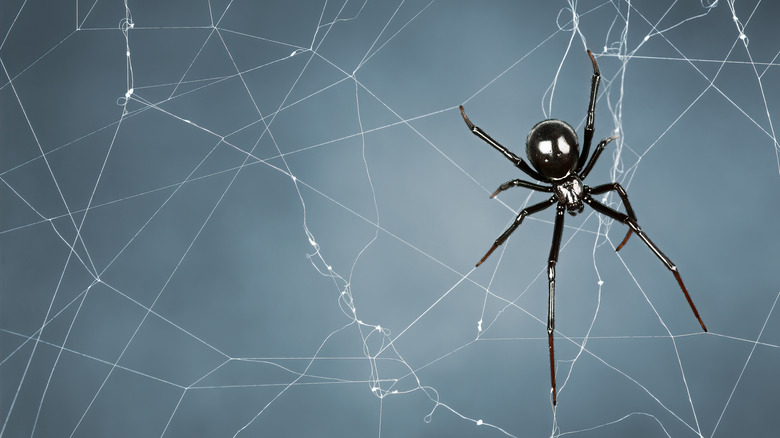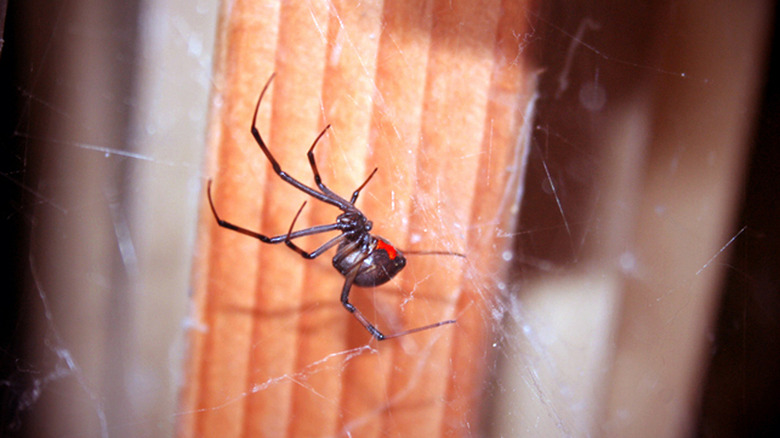The Spots In Your Home Where You Are Most Likely To Find A Black Widow Spider
Regardless of whether you experience arachnophobia or you simply want to avoid having to clear spider webs from your home, you're probably always on the lookout for ways to get rid of these arachnids. One type that you definitely want to keep out is the black widow. There are multiple species in this group that all fall under the Latrodectus genus, one of only two common poisonous taxonomic ranks of the insect in North America, along with the brown recluse (Loxosceles). Alaska is the only state that doesn't have a type of black widow spider.
Although black widow spider bites can be dangerous, they're rarely fatal. Still, you could experience uncomfortable muscle pain and cramps, so it's better to simply avoid this nasty little pest whenever possible. If you have children or elderly people in your home, they run the greatest risk of uncomfortable or dangerous symptoms after a black widow bite, so you'll want to keep an eye out for this creature.
If black widow spiders are living in your home, they tend to build webs in spots that are away from normal traffic patterns and human activity. They look for dark and dry secluded areas, such as a basement, garage, or underneath a patio or deck. Outdoors, black widows may live near the home in eaves or inside wood piles for firewood. They also may build webs in outbuildings on your property like barns.
How to identify these insects
If you see a web where black widow spiders tend to live — or if you notice a spider in one of those areas — there are a few things that can help you identify the genus. The most common species of black widow spider in North America is Latrodectus mactans, which is a shiny black color. On its abdomen, which has a bulbous shape, you'll notice bright red or orange spots that often resemble an hourglass. If the spider is hanging upside down in the web, you should be able to see the hourglass shape clearly. These creatures typically range in body length from 3 to 10 millimeters (about ⅛ of an inch to ⅖ of an inch), so the bodies are very small. You also may see a brown widow spider, or Latrodectus geometricus, which is a close relative of black widows. It's tan and brown with black marks on it, and it may also have an hourglass shape (typically orange in color).
If you don't see an actual spider, you may be able to identify the presence of a black widow by the type of web. It's extremely irregular with no discernible patterns. The irregularity appears because the creature uses different zones in the web for different actions. It usually builds its webs near the ground, which makes it easier to catch insects.
What should I do if I find a black widow in my home?
If you find black widows hiding in out-of-the-way places in your home, it's important to get rid of them as quickly as possible. This type of spider can lay up to 200 eggs at once, so even a few of these creatures can become an infestation in very little time. If you want to try to eliminate black widows on your own, you may be able to use a popular household essential: vinegar. When you are trying to get rid of them, you'll want to use extra caution, though. As you're disturbing them and their webs, they may try to hide in other locations before you can kill them or encourage them to fully leave your home. Be especially careful with the clothing you wear. Shake out any gloves, boots, or shoes that you use for gardening, as the spiders may try to hide in them.
If you simply don't want to deal with these poisonous spiders on your own, it's perfectly understandable. Your best option at that point is to keep your distance and reach out to a pest control company in your area. These pros can search all the common spots in your home where black widows may live and eliminate all of them. Once you're sure they're gone, try using essential oils to keep them at bay.


